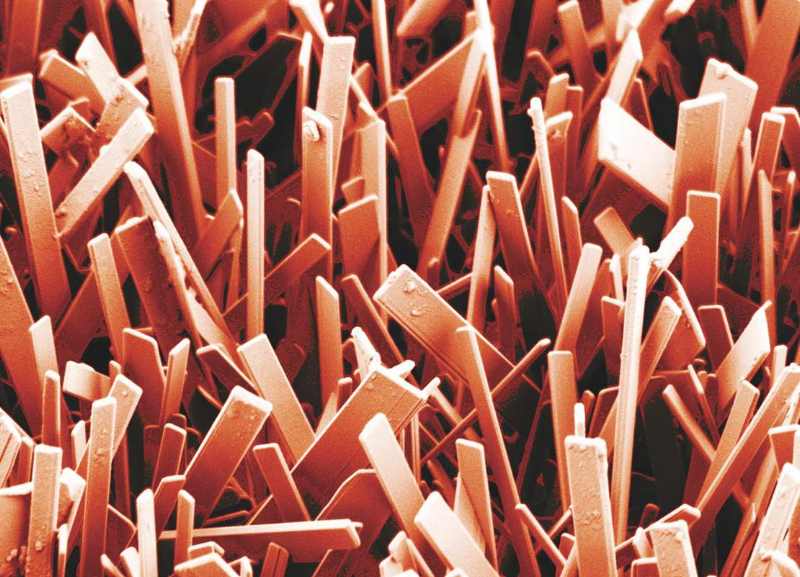Synthesis of quasi-oriented a-MoO3 nanobelts and nanoplatelets on TiO2
coated glass
Murat E. Kurtoglu, Travis Longenbacha, Yury Gogotsi
Received 19th February 2011, Accepted 24th March 2011
DOI: 10.1039/c1jm10752f (Journal of Materials Chemistry)
 This work was performed at Drexel University with
This work was performed at Drexel University with
funding provided by ArtCraft Glassware. SEM by
Murat Kurtoglu, color and design by Pavel Gogotsi
(Drexel University).
Using a simple yet effi cient wet-chemical method followed by
calcination, various morphologies of α-MoO3 structures are
produced, including nanobelts .
Researchers report on a new method to produce quasi-oriented a-MoO3 nanobelts on TiO2 coated glass
substrates. Using a simple yet efficient wet-chemical method with subsequent calcination, various
morphologies of a-MoO3 including oriented nanobelts, rods and platelets were produced. The crystal
morphology can be controlled by changing the substrate and/or the process parameters. Some
applications of the resulting structures were demonstrated by coating them with TiO2 and carbon. The
photocatalytic activity of the TiO2 coated a-MoO3 nanobelts was several times higher than that of the
smooth TiO2 coatings prepared on soda-lime glass. A very thin layer (20–30 nm) of carbon coated on
nanobelts by sputtering resulted in a highly light absorbing film with an average reflectivity of 4%, while
fluorosilane coated nanobelts showed superhydrophobic properties.
The next step of the work is to scale down the size of the electrodes and improve the dry etching procedure for removing metal atoms from metal carbides to make the process even more compatible with commercial microfabrication technology.
To read the full text of the article
www.drexel.edu
Nanotechnologies